https://amzn.to/3WgR1y3Size does not matter. Size does not matter. I’m talking about the size of certain books, and size does not matter. The content in books with a bigger presentation could be just as impactful if it were printed on standard paper, it doesn’t matter. Now, let us come back from fantasy land and lay witness to Bugs: A Skittery, Jittery History by Miriam Forster with illustrations by Gordy Wright. Bugs is a massively oversized statement of a book that lives somewhere between an illustrated book, a reference book, a STEM book, and a great, goodnight book. This book is impossible to ignore and presents biology to young audiences in a way that’s irresistible, curious, and motivational.
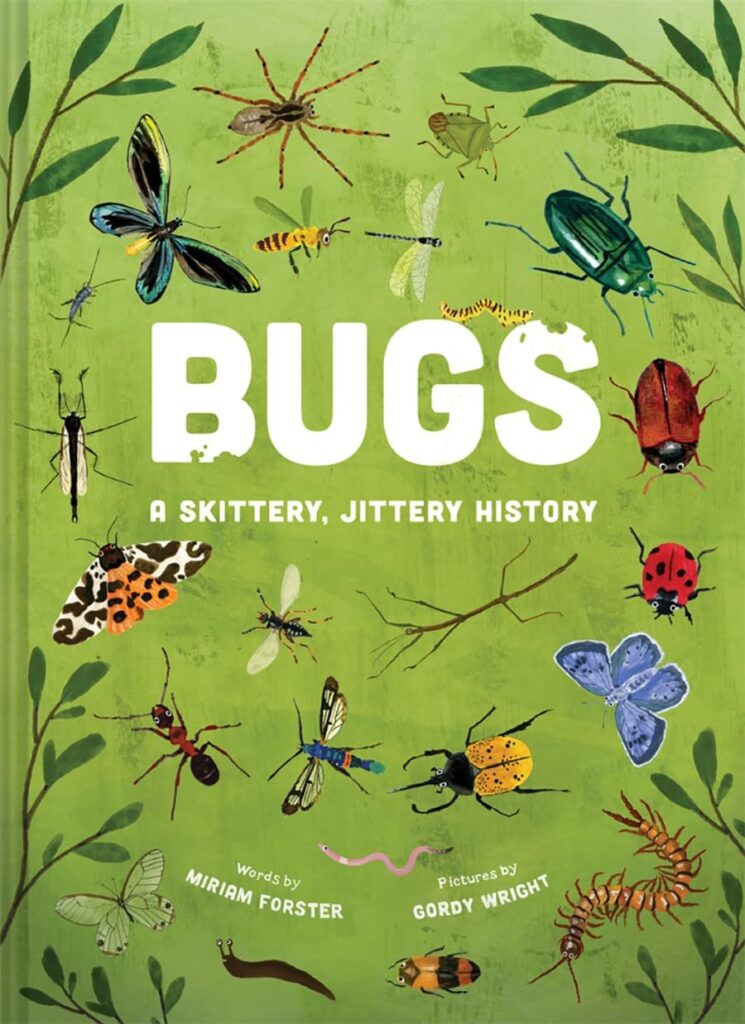
The content in Bugs is very intelligent. It’s written at a level that those fifth-grade students are looking for when they’re planning their essays. There will even be some fifth graders who won’t be able to read all of the words, but that could also be because they might get psyched out due to the scientific names of the buzzing, crawling things in the book. The text is presented in a very matter-of-fact manner that is educational, without being intimidating. This is important because it treats kids as the smart people they are and does not use vocabulary that assumes they’re babies.
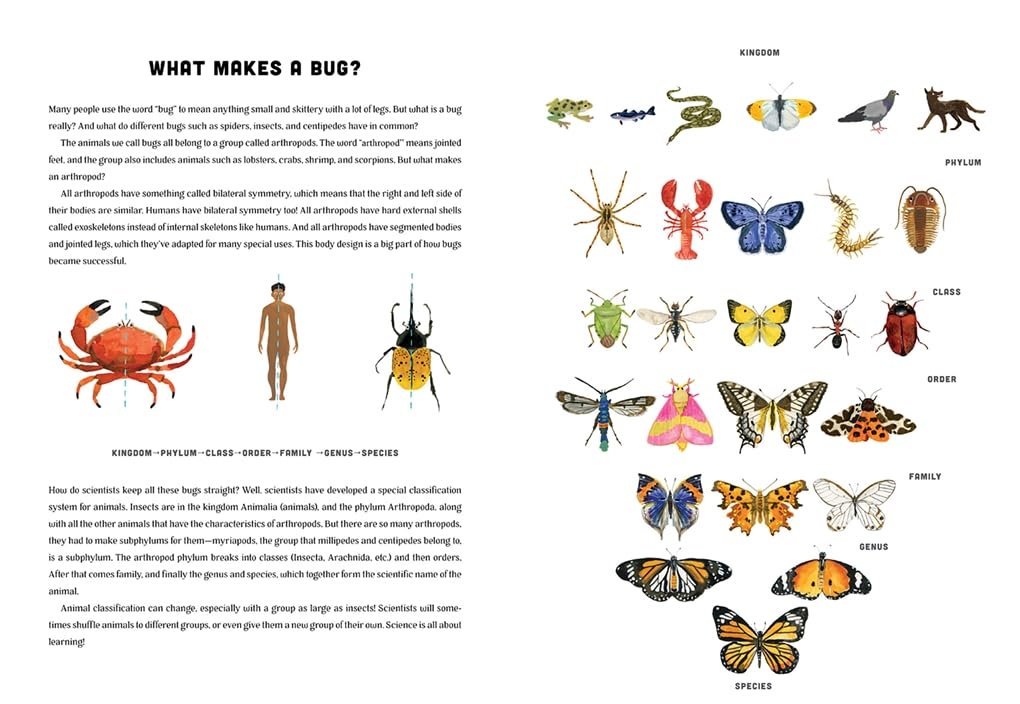
It’s the illustrations when partnered with the book’s size, and children’s natural curiosity about bugs that are the carrot leading readers to Bugs. The artwork has a layered, 3-D appearance as the bugs seem to have depth, texture, and personality, relative to them and their background. The other directly unspoken aspect of Bugs that will draw in readers are dinosaurs.
Dinosaurs are not bugs. Size does not matter. However, bugs have been around since the time of the dinosaurs and the entirety of Bugs showcases bugs in their ancient setting. Some pages show a bar graph that represents various millions of years with the bug’s placement in it. That is usually accompanied by a full-page illustration of the bug in their native environment, as well as, a close-up of the bug, or relatives of it.
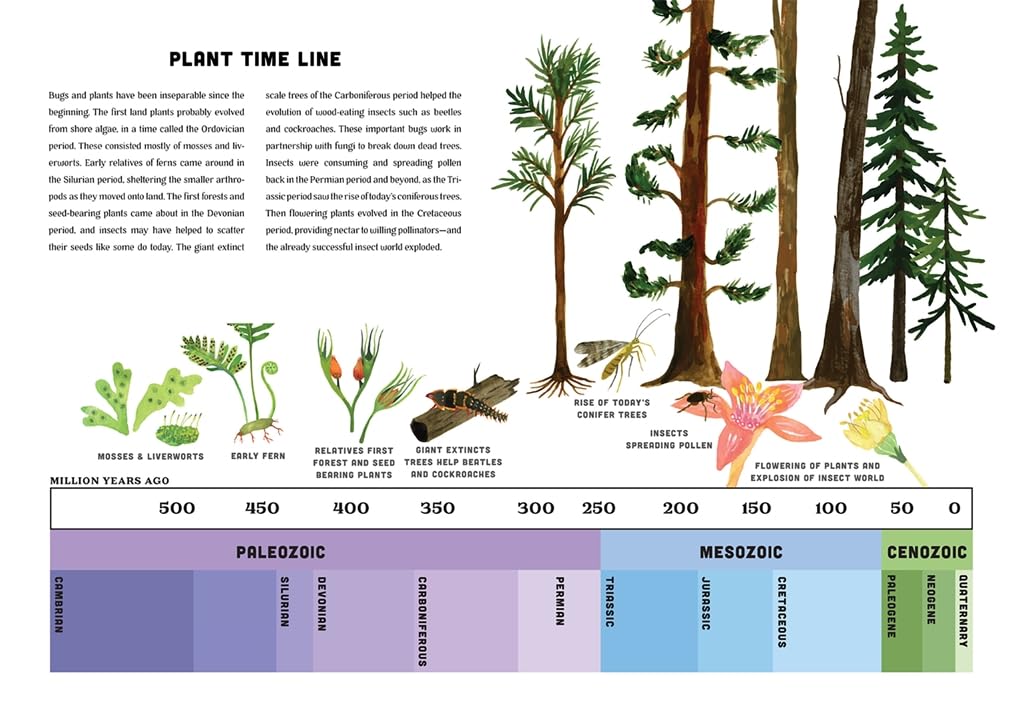
The next two pages take a look at specific attributes of bugs that make them unique and able to survive or communicate. It’s not that arthropods don’t care about anything; it’s that they don’t have a heart. Instead, they have a long tube that runs through their body and pumps what little blood they need around its cavity. Bugs is also loaded with the factoids that kids find interesting and will pepper people in the car with.
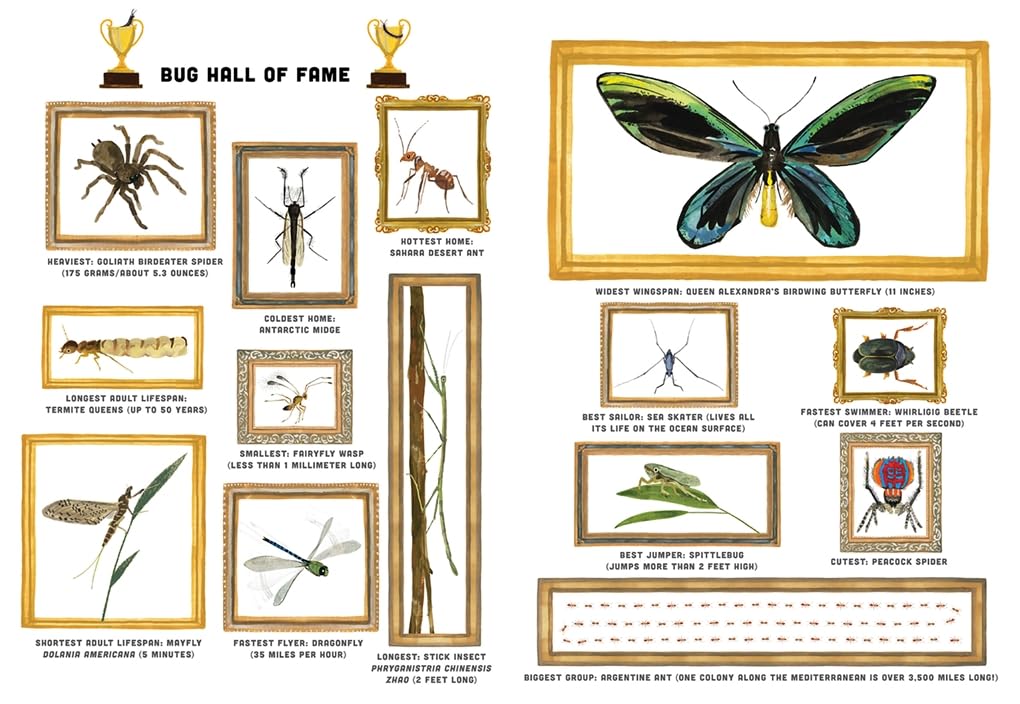
The longest millipede today is the Giant African Millipede which can be up to 13 inches long. Grasshoppers can jump 10 feet in one second. Beetles make up 40% of all insects. True bugs is a group of insects that are called that because small mouths that are able to pierce the inner tissue of plants and animals. Every page has some fun fact that fourth, fifth, and sixth graders will relish. This is one of those non-fiction books with a very large range of interest. Those kids that are younger than the aforementioned grades, but, the content is on a level that will yield new information to those in middle school too. Granted that is not the target audience for Bugs, but it’s a book that wouldn’t be out of its element if you find it in a middle school library or science classroom.
Kids also aren’t used to seeing a book this large. That curiosity will lead them to the cover, which will beg them to open it and they’ll be entertained by what’s inside. It’s not a narrative-style story, but the text is entertaining and the illustrations make kids want to see more. If you read it as a story then it would work, but it is not presented as that. However, bugs are interesting, kids love them, this book is huge, and connecting these dots at the end of the day for story time won’t be too challenging. If that’s too far of a stretch for your reader this is one of those books that they’ll see in class or at the library that will help make their potentially ordinary reports on bugs more interesting.
Bugs: A Skittery, Jittery History is by Miriam Forster with illustrations by Gordy Wright.
There are affiliate links in this post.

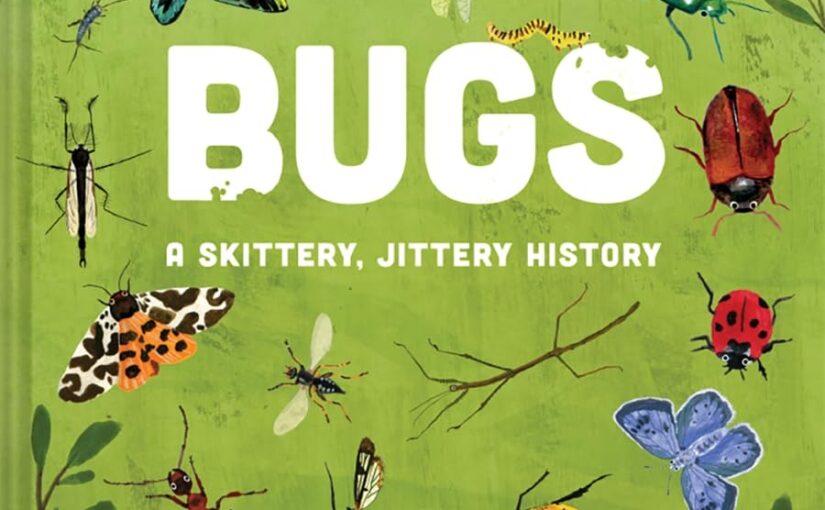



 Facebook
Facebook Twitter
Twitter Flickr
Flickr GooglePlus
GooglePlus Youtube
Youtube